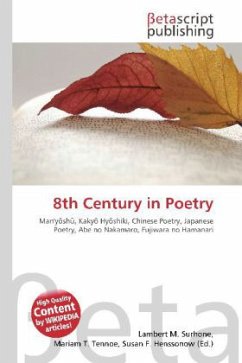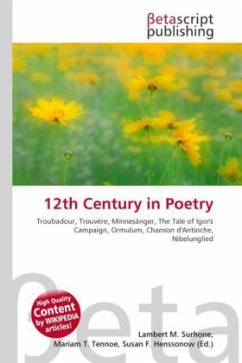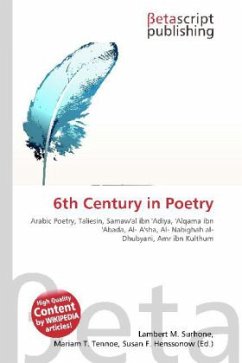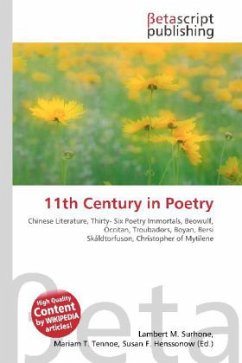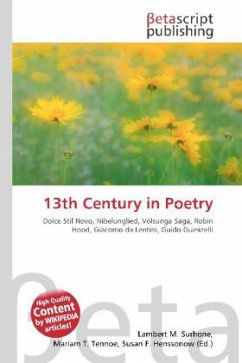Please note that the content of this book primarily consists of articles available from Wikipedia or other free sources online. Chinese poetry is the most highly regarded literary genre in China. Traditionally, it is divided into shi , ci and qu. There is also a kind of prose-poem called fu . During the modern period, there also has developed free verse in Western style. All traditional forms of Chinese poetry are rhymed, but not all rhymed texts in ancient China are classified as poetry - for instance, lines from I Ching are often rhymed, but it is not considered poetry. (Compare the Pre-Socratic philosophical works in ancient Greece which are in the form of poetry. Japanese poets first encountered Chinese poetry when it was at its peak in the Tang Dynasty. It took them several hundred years to digest the foreign impact, make it a part of their culture and merge it with their literary tradition in their mother tongue, and begin to develop the diversity of their native poetry. For example, in the Tale of Genji both kinds of poetry are frequently mentioned. (Since much poetry in Japan was written in the Chinese language, it is perhaps more accurate to speak of Japanese-language poetry.)
Bitte wählen Sie Ihr Anliegen aus.
Rechnungen
Retourenschein anfordern
Bestellstatus
Storno

